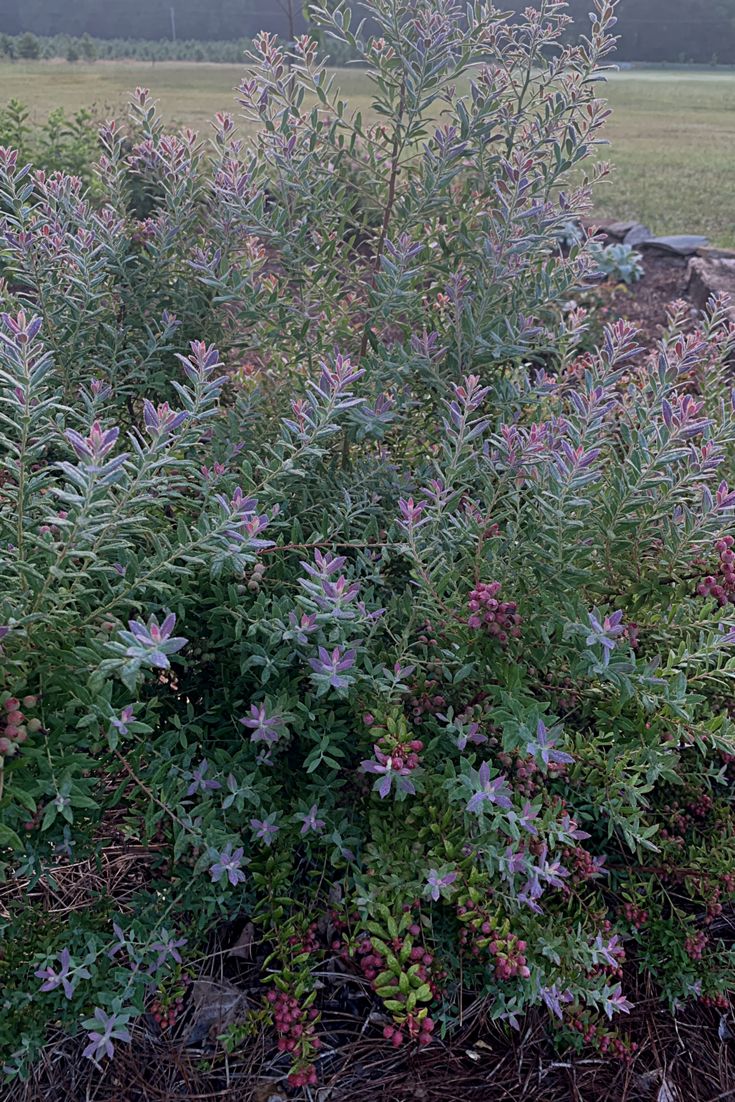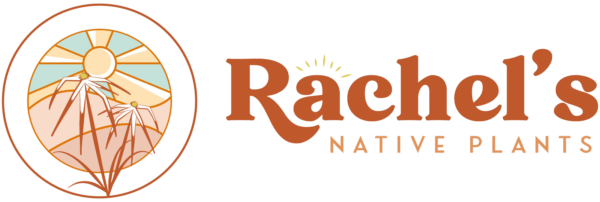Rosa’s Blush’ is a cultivar of a small Vaccinium species native to sandy pinelands and sand dunes in counties along the Gulf Coast as far West as Louisiana, and frost tolerant to zone 8a (some say, zone 7). There is disagreement as to whether this shrub should be grown for its all-season foliage display or for its sweet, edible berries. The shrub grows to 3-4 feet x about 3 feet wide. In the spring, new growth is bright pink turning to bluish green in summer and — even though it is evergreen — to deeper reds and purple as fall ensues. White/pink urn-shaped flowers in spring develop into small, sweetly edible blue-black berries in early summer. It is sun-loving and should be sited in a well drained location with acid pH (4 to 5.5). This species cannot tolerate standing water or alkaline soil. This blueberry will self-pollinate and set fruit, but studies have shown that there will be a sizable increase in fruit set if another variety of blueberry is close by for cross-pollination. Being evergreen and unusually attractive, ‘Rosa’s Blush’ would function beautifully as a specimen in a native garden, or, because it is small and so very ornamental, it would particularly lend itself to maintenance in a patio container. There, the berries can be harvested as they ripen a few at a time over a long period. Expect the shrub to be a bit smaller in a container, and, if container grown, care should be taken in winter to protect the plant as it will be susceptible to cold damage at our latitude if not in the ground. The USDA plant distribution map linked below is for the species, V. darrowii.
NURSERY HOURS
Wednesday: 10-4 Thursday: 10-6 Friday-Saturday: 10-4 Sunday: 12-4
Vaccinium darrowii ‘Rosa’s Blush’

Key Info
Scientific Name: Vaccinium darrowii Camp cv. 'Rosa's Blush'
Common Names: 'Rosa's Blush' Blueberry, Scrub Blueberry, Darrow's Dwarf, Darrow's Evergreen Blueberry
Family Names: Ericaceae
Plant Type: Tree / Shrub
Leaf Retention: Evergreen
Flower Color: White/pink
Special Characteristics: Edible fruit (in jams), Rhizomatous, Attracts bees, Attracts butterflies, Drought tolerant
Additional Info
Habit: Upright, densely branched shrub with rounded form
Height: 2' - 3'
Spread: 2' - 3'
Soil Conditions: Medium to dry or seasonally wet to dry, sandy, acid soil.
Leaves: Alternate, simple, evergreen; small leaves, variably colored with whitish bloom; margins thickened and revolute.
Flowers (or reproductive structures: Small, white/pink, waxy, urn-shaped, borne in axillary racemes in early spring.
Fruit: Small, blue-black berries ripening in early summer.
Natural Distribution: Pinelands and sand dunes along Gulf Coast.
USDA Hardiness Zone: 7 to 10
USDA Wetland Indicator Status in NC: FACU
Pollination: Bees
Wildlife Connections: Mammals and birds eat fruit; moderate quality deer browse.
Propagation: Softwood cuttings in spring.
